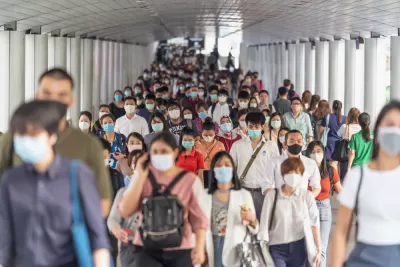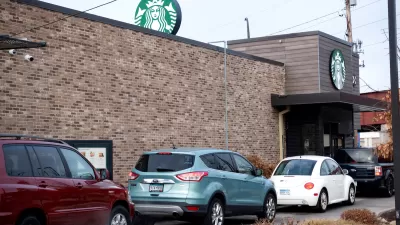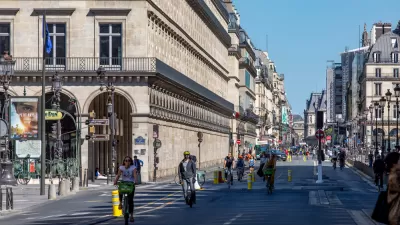As economies begin to reopen around the world, some cities are taking action to prevent widespread gridlock.

"As coronavirus lockdowns loosen around the world, city leaders are scrambling to address a new problem: the prospect of gridlock worse than before the pandemic," write Somini Sengupta and Brad Plumer. "From Shenzhen to Milan to Austin, officials are trying to coax people back onto buses and subways and reclaim road space for cyclists and pedestrians."
The consequences of fewer people riding transit or riding bikes will be bad for congestion, pollution, and injuries and fatalities caused by collisions, according to the article. But many cities are struggling to mitigate the oncoming traffic.
More than 30 large cities coming out of lockdown, including Hong Kong, Shenzhen, Oslo and Geneva, recorded more congestion on their roads in mid-June compared with the same period last year, according to data from TomTom, a navigation company. Other early evidence suggests that driving is increasing faster than public transit use as people step out of confinement and move around again.
The article surveys the globes for some of the transportation planning responses to the growth in automobile travel as public transit struggles, including the examples of Bogotá, London, Seoul, Beijing, and Austin. Here are the details on Austin's efforts:
In Austin, Tex., the city has expanded its system of public shuttles that can be reserved through a mobile app by riders who aren’t well served by existing bus lines. Officials are also drawing up plans to better integrate existing bus and rail lines with the city’s bike-share system by offering unified ticketing and apps. They also plan to eventually replace the city’s 1,000 shared bikes with electric versions that make travel easier in the sweltering Texas heat.
FULL STORY: Lockdowns Tamed Road Traffic. Here’s How Cities Aim to Keep It Down.

Study: Maui’s Plan to Convert Vacation Rentals to Long-Term Housing Could Cause Nearly $1 Billion Economic Loss
The plan would reduce visitor accommodation by 25,% resulting in 1,900 jobs lost.

North Texas Transit Leaders Tout Benefits of TOD for Growing Region
At a summit focused on transit-oriented development, policymakers discussed how North Texas’ expanded light rail system can serve as a tool for economic growth.

Using Old Oil and Gas Wells for Green Energy Storage
Penn State researchers have found that repurposing abandoned oil and gas wells for geothermal-assisted compressed-air energy storage can boost efficiency, reduce environmental risks, and support clean energy and job transitions.

Private Donations Propel Early Restoration of Palisades Playground
Los Angeles has secured over $1.3 million in private funding to restore the Pacific Palisades playground months ahead of schedule, creating a modern, accessible space that supports community healing after recent wildfires.

From Blight to Benefit: Early Results From California’s Equitable Cleanup Program
The Equitable Community Revitalization Grant (ECRG) program is reshaping brownfield redevelopment by prioritizing projects in low-income and environmental justice communities, emphasizing equity, transparency, and community benefits.

Planting Relief: Tackling Las Vegas Heat One Tree at a Time
Nevada Plants, a Las Vegas-based nonprofit, is combating the city’s extreme urban heat by giving away trees to residents in underserved neighborhoods, promoting shade, sustainability, and community health.
Urban Design for Planners 1: Software Tools
This six-course series explores essential urban design concepts using open source software and equips planners with the tools they need to participate fully in the urban design process.
Planning for Universal Design
Learn the tools for implementing Universal Design in planning regulations.
Ascent Environmental
Borough of Carlisle
Institute for Housing and Urban Development Studies (IHS)
City of Grandview
Harvard GSD Executive Education
Toledo-Lucas County Plan Commissions
Salt Lake City
NYU Wagner Graduate School of Public Service





























